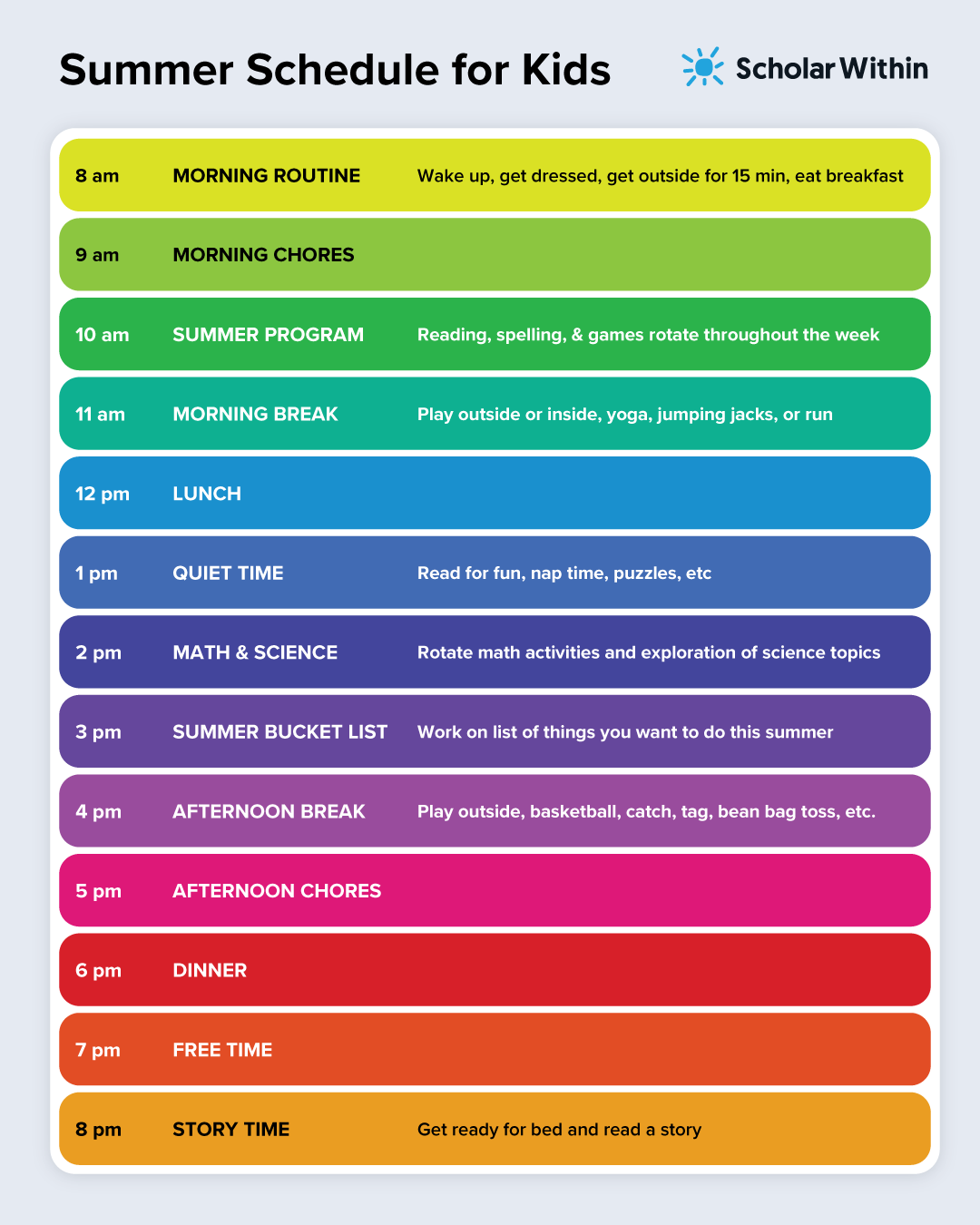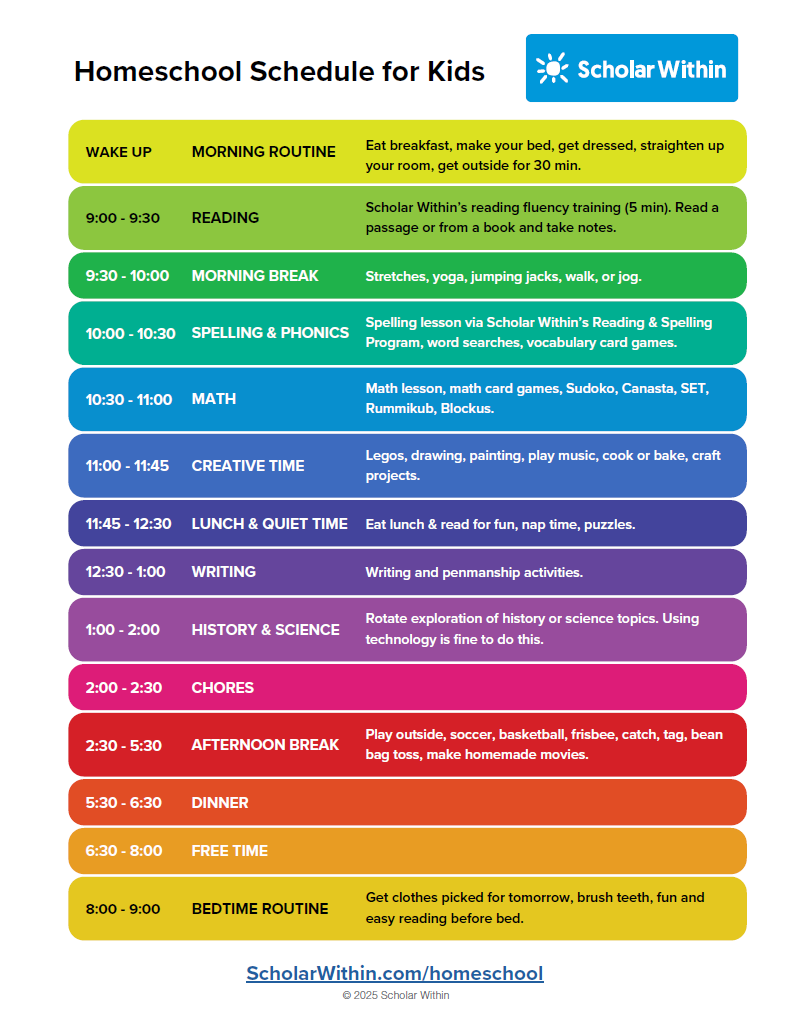Reading fluency is the speed or rate of reading without conscious attention to the mechanics of reading. A fluent reader has the ability to read and understand words automatically. They are able to more easily comprehend complete sentences and entire reading selections.
Articles on Reading
Reading and Spelling: Decoding and Encoding
How are Reading and Spelling Connected? Reading and spelling are two sides of the same coin. In order to do one part well, you need the other part. In order to read, you need to decode (sound out) words. In order to spell, you need to encode words. In other words, to spell, you need…
Background Knowledge and Reading Comprehension
Factual knowledge, also known as background knowledge, can make the difference from not having a clue what you have read to comprehending and completely understanding what you have read.
How to Create a Daily Schedule for Kids (FREE Printable)
School’s out, and summer is here! Pool parties, backyard barbeques, days at the river… and summer learning loss! Hold up. Wait. Let’s put a stop to the summer learning loss, but let’s keep the good stuff. Kids often lose much of what they learned from the school year over the summer. This is because most…
What is Reading Fluency?
Reading Fluency Definition Reading fluency is the ability to read smoothly, easily, and quickly. Good readers can read words automatically without having to sound out each syllable (also known as decoding). In other words, you don’t have to spend a lot of effort and attention on the mechanics of reading. Reading becomes easy. Word recognition…
Phonemic Awareness and Reading
What is Phonemic Awareness? Phonemic awareness is the ability to hear, identify, and manipulate individual sounds – phonemes – in spoken words. A phoneme is a unit of sound that distinguishes one word from another, for example, /b/, /k/, and /s/ in the words bat, cat, and sat. Phonemic awareness is critical to reading and…
COVID-19 Announcement: Complimentary Reading Program
We have decided to offer our Online Reading Program at no cost for one month during shelter-in-place. We understand that finances are tight and we want to make our program accessible for all families in this unprecedented time.









